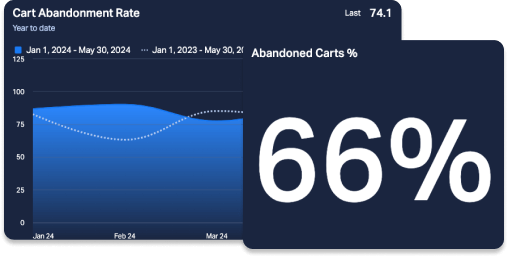Why is Cart Abandonment Rate an important KPI for e-commerce companies?
Cart Abandonment Rate is important for a couple of reasons.
First, it is directly connected to your capacity to notify customers of unpurchased items. Does your algorithm detect cart abandonment, and notify customers accordingly? If not, the likelihood of customers not returning to follow through with their purchases increases greatly.
Second, Cart Abandonment Rate reveals how intuitive and customer-centric your checkout process is. Is your checkout process too lengthy and complex? If so, customers may abandon their carts, at least temporarily, but of course may not actually return to purchase the items they’ve selected. Customers will often be frustrated by being asked to input too much demographic information, by being prompted to create an account in order to check out, and by unclear information about pricing, shipping costs, and taxes.
Therefore, Cart Abandonment serves as a bellwether of both customer satisfaction and revenue loss. If customers feel discouraged from purchasing not by your product or service itself, but by the purchasing process; and if your algorithm doesn’t notify your customers of items they haven't purchased, you’ve struck out twice: missing both customer revenue and customer satisfaction.


